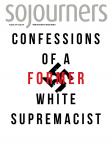AMONG THE THINGS the Trump administration has successfully disrupted is the media hierarchy within the White House press corps. These days the Christian Broadcasting Network gets called on at presidential press conferences and CNN gets ignored.
One of the biggest beneficiaries of this shift has been a chain of local TV stations called the Sinclair Broadcast Group, which currently reaches 38 percent of U.S. households with a blend of local news and right-wing messaging. Sinclair is a big power on the U.S. media landscape, and it’s about to get a lot bigger and more powerful. Today the group owns 173 stations, but it is about to take advantage of a Trump administration change in media ownership rules to buy the 42 stations owned by Tribune Media, including outlets in New York and Los Angeles and the Chicago-based WGN America cable channel.
While Fox News is weakened by internal bleeding and Bill O’Reilly is looking for a job, the Sinclair Group is poised to emerge as a national media voice that sometimes skews to the right of O’Reilly’s old shop and has a much broader potential reach.
Sinclair first gained notoriety for using local news to push an ideological agenda back in 2004, with a plan—changed when it became public—to pre-empt its stations’ programming in late October with a documentary showcasing false claims about John Kerry’s Vietnam service. These days, Sinclair stations run The Right Side, a political talk show hosted by Armstrong Williams, who managed Ben Carson’s presidential campaign. The head office in Baltimore regularly issues edicts to local news directors about “must run” stories, which almost always carry a right-wing spin.
This extension of conservative advocacy into local news is important because, believe it or not, local broadcast TV is still the most relied upon news source in the U.S., according to the Pew Center, well ahead of cable, news websites, or social media.
The 2016 Trump campaign saw the value of Sinclair’s channel into America’s heartland. Trump son-in-law Jared Kushner has said they gave Sinclair reporters privileged access to the campaign; Sinclair stations ran 15 interviews with candidate Trump, 10 with Mike Pence, and 10 more with Ben Carson and other Trump surrogates. This compared to no interviews with Hillary Clinton, five with Tim Kaine, and two with Chelsea Clinton. In addition, those 173 stations received “must run” orders attached to negative stories about Clinton, including one promoting conspiracy theories about her health.
And after all that “quid” here comes the “quo.”
The FCC regulates how many TV stations any one company can own. Currently one company can’t own stations whose signal could potentially reach 39 percent of the U.S. population. There are two types of signals that broadcast-TV stations use, VHF (for channels 2 through 13) and UHF (channels 14 and up). Historically, UHF was a weaker signal, so a UHF station was presumed by the FCC to only reach half as many viewers as a VHF station.
With the conversion to digital broadcasting in 2009, the Obama-appointed FCC decided that the UHF distinction had become irrelevant and dropped it. This left the Sinclair Group at 38 percent of potential viewers and no room to grow.
However, one of the first acts of the Trump-appointed FCC was to bring the UHF rule back, thus allowing the Sinclair-Tribune merger. As Jeff Guo at Vox.com pointed out, “If by next year only a quarter of households in Sinclair’s distribution area watched the local news on a Sinclair-owned station, that would still yield over 4 million nightly viewers—which is more than the typical audience for Fox News’s top show The O’Reilly Factor.”
And did we mention that O’Reilly is looking for a job?

Got something to say about what you're reading? We value your feedback!

